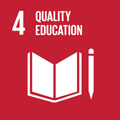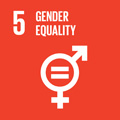- Docente: Raffaella Tonin
- Credits: 5
- Language: Spanish
- Teaching Mode: In-person learning (entirely or partially)
- Campus: Forli
-
Corso:
First cycle degree programme (L) in
Languages and Technologies for Intercultural Communication (cod. 5979)
Also valid for First cycle degree programme (L) in Languages and Technologies for Intercultural Communication (cod. 5979)
First cycle degree programme (L) in Languages and Technologies for Intercultural Communication (cod. 5979)
First cycle degree programme (L) in Languages and Technologies for Intercultural Communication (cod. 5979)
-
from Sep 29, 2025 to Dec 18, 2025
Learning outcomes
At the end of the module, students will be familiar with the grammatical, lexicographical and encyclopaedic tools, corpora and other online and printed reference materials. He/she knows the main translation techniques, methodologies and strategies to be applied in the pre-translational analysis of the source text, in the documentation and in the drafting and revision of the target text, depending on the communicative functions of the texts to be translated and the translation assignment. He/she is able to apply these dynamics in the translation of a variety of semi-specialist texts from Spanish into Italian, according to a medium-high level of translation competence.
Course contents
The programme includes the analysis, documentation, translation, revision and editing of various text types (journalistic reviews, articles of news and opinion, illustrated and scientific literature, children's literature, etc.) dealing with different thematic areas (politics, tourism, fiction, social sciences, history, etc). Moreover, a number of topics related to translation studies (theory and history of translation) will be explored both at methodological, and terminological levels.
In order to acquire an appropriate degree of translation competence (cfr. Hurtado Albir, 2001 e 2015), the activities and tasks such as analysis, documentation, revision practice, methodological comments, etc. will take place following different approaches, according to the specific aim of each unit or text to be translated.
Readings/Bibliography
Source texts:
The source texts, as well as some other supporting tools, will be available on Virtuale's e-learning platform at the beginning of the course.
Other supporting materials are listed below.
Dictionaries, corpora, etc.:
Arqués / Padoan (2012). Il grande dizionario di spagnolo. Zanichelli: Bologna.
CLAVE, Diccionario de uso del español actual (2002). Madrid: Ediciones SM.
Fundación del Español Urgente ‹http://www.fundeu.es/›
Garzanti (2009), Dizionario di spagnolo. Milano: Garzanti Linguistica.
IATE, InterActive Terminology for Europe, ‹iate.europa.eu›
Moliner, M. (2007) Diccionario de uso del español. Madrid: Gredos (3 ed.).
Real Academia Española (2015), Diccionario de la lengua española, 23.ª ed. ‹http://www.rae.es/obras-academicas/diccionarios/diccionario-de-la-lengua-espanola›
Real Academia Española, Corpes, Corpus del español del siglo XXI,http://www.rae.es/recursos/banco-de-datos/corpes-xxi›.
Real Academia Española, CREA, ‹http://www.rae.es/recursos/banco-de-datos/crea›
Tiberii, P. (2012). Il dizionario delle collocazioni. Bologna: Zanichelli.
Trifone, M. (2013). Il Devoto-Oli dei Sinonimi e Contrari. Milano: Le Monnier.
Zingarelli, N. (2013). Vocabolario della lingua italiana. Bologna: Zanichelli.
References:
Basso, S. (2010). Sul tradurre. Esperienze e divagazioni militanti. Milano: Mondadori.
Bazzocchi, G. e Tonin, R. (eds.) (2015). Mi traduci una storia? Riflessioni sulla letteratura per l'infanzia e per ragazzi. Bologna: BUP.
Bricchi, M. (2018). La lingua è un'orchestra. Piccola grammatica italiana per traduttori (e scriventi). Milano: Il Saggiatore.
D'Arcangelo, A. (ed.) (2016). Promuovere la competenza interculturale nella didattica della traduzione, Bologna: BUP.
Hurtado Albir, A. (2001). Traducción y traductología. Introducción a la traductología. Madrid: Cátedra.
Hurtado Albir, A. (2015.) Aprender a traducir del francés al español. Competencias y tareas para la iniciación a la traducción. Guía didáctica. Madrid: Edelsa
Hurtado Albir, A. (2017) Researching Translation Competence by PACTE Group. Ámsterdam: John Benjamins
Moya, V. (2004). La selva de la traducción. Madrid: Cátedra.
Mortara Garavelli, B. (2003). Prontuario di punteggiatura. Bari: Laterza.
Nord, Ch. (2012). Texto base-texto meta. Un modelo funcional de análisis pretraslativo. Castelló: Universidad Jaume I
PACTE, (2011) “Results of the Validation of the PACTE Translation Competence Model: Translation Project and Dynamic Translation Index”. En: O’Brien S. (ed.), Cognitive Explorations of Translation. IATIS Yearbook 2010. Londres: Continuum, 30-56.
Pérez Vicente, N. (2024) Los culturemas: aprender a traducir con la literatura infantil y juvenil (LIJ). Bologna: Clueb.
Piacentini M.; Pederzoli R. & Tonin R., (2032) Tradurre per l’infanzia e l’adolescenza. Riflessioni per una sfida culturale e professionale [https://cris.unibo.it/handle/11585/923536], «INTRALINEA ON LINE TRANSLATION JOURNAL», 2023 Special issue.
San Vicente, F. & Gloria Bazzocchi (eds.) (2021). LETI. Lengua española para traducir e interpretar, Bologna: CLUEB.
Serafini, F. (2012). Questo è il punto. Istruzioni per l'uso della punteggiatura. Bari: Laterza.
Tonin, R. (2016). "Ai confini della traduzione: creatività e competenza (bi/inter)culturale nel viaggio traduttivo tra spagnolo e italiano", in: Promuovere la competenza interculturale nella didattica della traduzione, Bologna, Bononia University Press, pp. 121-137.
Tonin, R. (2017). "La traducción colectiva de un álbum ilustrado como experiencia didáctica: de la propuesta editorial a la publicación italiana de Tu corazón en un cofre", in: AILIJ (Anuario de Investigación en Literatura Infantil y Juvenil), Vigo, Pontevedra, Universidad de Vigo, Facultad de Filología y Traducción, pp. 153 - 170.
Tonin R. (2019) "El viaje entre español e italiano en el aula de traducción: documentarse, gestionar problemas y dominar técnicas de trasvase", AltreModernità, 21:108-123
Tonin R. (2021) "Del taller de traducción colectiva a la publicación italiana de la novela gráfica Tutto quello che non dimenticherai mai del tuo Erasmus: el papel de la experiencia directa en la práctica y adquisición de la competencia traductora", Estudios de Traducción, 11: 21-32.
Tonin R. (2021) "La traducción del turismo", San Vicente, F. & Gloria Bazzocchi (eds.), LETI. Lengua española para traducir e interpretar, Bologna: CLUEB. 283-298.
Tonin R., Lozano R. e Maggi M. (eds) (2024). Tradurre per il giovane pubblico: approcci metodologici, nuove contaminazioni e pratica collaborativa a confronto. Bologna: Clueb.
VV.AA. (2013). Hijos de Babel: reflexiones sobre el oficio de traductor en el siglo XXI. Madrid: Fórcola.
Teaching methods
Lessons will be mostly in the form of workshops/seminars.
Basically, each new translation task will be divided into three main steps:
- analysis of the source text, identifying the main communicative functions and kind of problems (of interpretation and rendering, i.e. linguistic, extra-linguistic, textual, pragmatic and intentional - cfr. Hurtado Albir, 2015);
- translation (carried out in group or individually, at home or at class, etc.);
- and finally, proof reading during the lesson.
All students must prepare his/her version of the translation exercise, ready for the lesson. In addition, it is essential to actively contribute to the dialogue with the teacher and the rest of the students - whether following remotely or physically in the class -and show a collaborative and constructive attitude.
In order to prepare for the exam and to understand the teacher's assessment method, the students will submit periodical assignments to the teacher and receive individual corrections. A mock text will also be carried out with the same purpose. The same assessment method of the exam will be applied to the mock text, in order to clarify the various types of translation error and their weight in the final evaluation.
A collaborative translation project is programmed. It will be presented in details during the first lessons.
In view of the type of activity and teaching methods adopted, the attendance of this training activity requires the prior participation of all students in modules 1 and 2 of training on safety in the workplace, [https://elearning-sicurezza.unibo.it/] in e-learning mode.
Assessment methods
The final examination will verify the acquisition of an independent analytical and translation method, as well as the strategies to be applied to resolve the problems according to their nature, to the indications of the translation task, and to the stylistic and expressive mechanisms in the target language.
The exam consists in translating a short text from Spanish into Italian (approximately 400 words), and adding some commentary notes to it. They will highlight: the main problems found in the original text, the prevailing communicative function and the main translation techniques adopted.
During the exam, which lasts about 3 hours, students will be allowed to use monolingual and bilingual dictionaries and glossaries produced during the course, as well as online resources usually consulted during the course (except for Machine Translation softwares and AI tools).
The assessment of the examination is in thirtieths and responds to the achievement of the following learning outcomes:
Learning assessment scale
30-30L: excellent test demonstrating excellent acquisition of the expected knowledge, including related methodological reflections, as well as complete mastery of the target language and full understanding of the source language and culture.
27-29: above average exam, with minor errors or in any case compensated for by more than sufficient demonstration of the knowledge and skills to be acquired.
24-26: fairly good exam, but with some errors indicating a partial acquisition of the knowledge and skills required.
21-23: sufficient proof, with evident limitations in the knowledge and skills to be acquired.
18- 20: the exam meets the minimum criteria of knowledge and skills to be acquired.
< 18: insufficient basic knowledge not achieved, the examination must be repeated.
In addition, the evaluation of the collaborative translation activity carried out in the blended project will add up to a maximum of 3 points to the exam grade of the translation to Italian module. Further details will be provided by the lecturer in class.
Students with specific learning difficulties (SpLD) or with disabilities that can affect their ability to attend courses are invited to contact the University service for students with disabilities and SLD at the earliest opportunity -- ideally before the start of the course: https://site.unibo.it/studenti-con-disabilita-e-dsa/en/for-students. The University service will suggest possible adjustments to the course work and/or exam, which must then be submitted to the course leader so they can assess their feasibility, in line with the learning objectives of the course. Please note that adjustments to the exam must be requested at least two weeks in advance.
Teaching tools
- Corpora, data bases, mono and bilingual dictionaries (online and paper version);
- Computers with Internet connection, webcam and microphone and beamer, Microsoft Teams platform;
- Virtuale e-learning platform.
Office hours
See the website of Raffaella Tonin
SDGs


This teaching activity contributes to the achievement of the Sustainable Development Goals of the UN 2030 Agenda.
